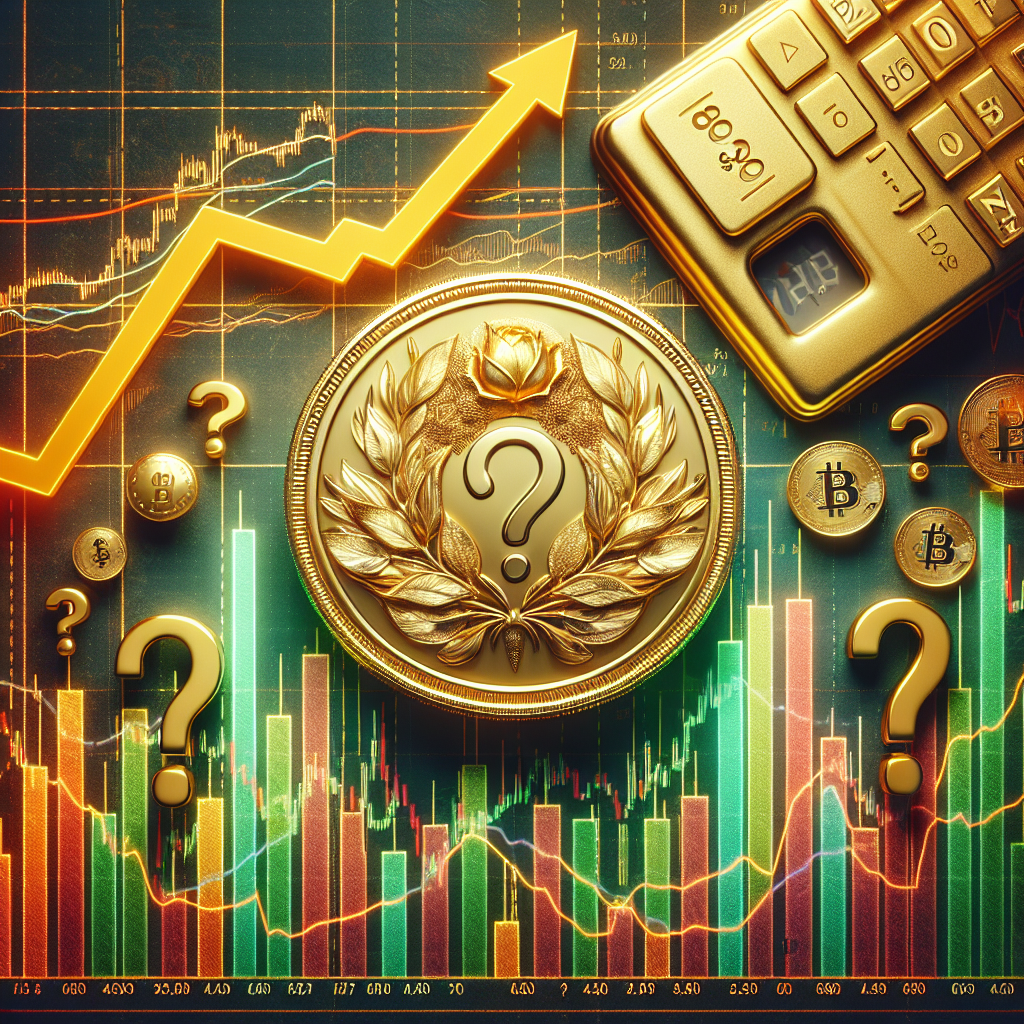“Gold: Timeless Value in a Changing World.”
Introduction
Gold has long been regarded as a symbol of wealth and a reliable store of value, attracting investors seeking stability amidst economic uncertainty. Historically, it has served as a hedge against inflation, currency fluctuations, and geopolitical tensions. However, in today’s rapidly evolving financial landscape, characterized by the rise of digital currencies, fluctuating interest rates, and shifting market dynamics, the question arises: Is gold still a shining investment? As traditional and modern investment avenues vie for attention, understanding gold’s current role and potential future in a diversified portfolio becomes crucial for investors aiming to navigate the complexities of the global economy.
Historical Performance Of Gold As An Investment
Gold has long been regarded as a symbol of wealth and a reliable store of value, tracing its allure back to ancient civilizations. Its historical performance as an investment has been a subject of interest for both individual and institutional investors. To understand whether gold remains a shining investment today, it is essential to examine its historical trajectory and the factors that have influenced its value over time.
Historically, gold has served as a hedge against inflation and currency devaluation. During periods of economic uncertainty, investors have often turned to gold as a safe haven asset. For instance, during the 1970s, the world experienced significant inflationary pressures, and gold prices soared as investors sought refuge from the eroding value of paper currencies. This period marked a significant rise in gold’s prominence as an investment vehicle, reinforcing its reputation as a protective asset.
Moreover, gold’s performance during financial crises further underscores its appeal. The 2008 global financial crisis, for example, saw a surge in gold prices as stock markets plummeted and economic instability loomed large. Investors flocked to gold, driving its price to unprecedented levels. This pattern of behavior highlights gold’s role as a counter-cyclical asset, often moving inversely to traditional equities and providing a buffer during turbulent times.
In addition to its role as a crisis hedge, gold has also been a beneficiary of geopolitical tensions. Historical events such as wars and political upheavals have often led to spikes in gold prices. The uncertainty surrounding such events tends to drive investors towards assets perceived as stable and reliable, with gold frequently topping the list. This characteristic has cemented gold’s status as a strategic asset in diversified investment portfolios.
However, it is important to note that gold’s performance is not solely dictated by crises and geopolitical factors. The metal’s value is also influenced by supply and demand dynamics, central bank policies, and interest rates. For instance, when central banks increase their gold reserves, it can signal confidence in gold’s long-term value, thereby boosting its price. Conversely, rising interest rates can make gold less attractive, as it does not yield interest or dividends, leading investors to seek higher returns elsewhere.
Despite these fluctuations, gold has demonstrated a capacity for long-term value retention. Over the decades, it has generally maintained its purchasing power, even as fiat currencies have depreciated. This enduring quality has made gold a favored choice for those seeking to preserve wealth across generations.
In conclusion, the historical performance of gold as an investment reveals a complex interplay of factors that have contributed to its enduring appeal. While it has consistently served as a hedge against inflation, financial crises, and geopolitical uncertainties, its value is also subject to broader economic conditions and market dynamics. As such, while gold may not always deliver spectacular short-term returns, its role as a stabilizing force in investment portfolios remains significant. For investors considering gold today, understanding its historical context and the factors that drive its value is crucial in assessing whether it continues to shine as a viable investment option.
Factors Influencing Gold Prices In Today’s Market
Gold has long been considered a safe haven for investors, a tangible asset that retains value even in times of economic uncertainty. However, the factors influencing gold prices in today’s market are multifaceted and dynamic, reflecting a complex interplay of global economic conditions, geopolitical tensions, and market sentiment. Understanding these factors is crucial for investors seeking to determine whether gold remains a shining investment.
To begin with, one of the primary drivers of gold prices is the state of the global economy. In times of economic instability or recession, investors often flock to gold as a secure store of value. This is because gold is perceived as a hedge against inflation and currency devaluation. When inflation rates rise, the purchasing power of fiat currencies tends to decline, prompting investors to seek refuge in gold, which historically maintains its value over time. Conversely, when the economy is robust and inflation is under control, the demand for gold may diminish, leading to a potential decrease in its price.
In addition to economic conditions, interest rates play a significant role in shaping gold prices. Generally, there is an inverse relationship between interest rates and gold prices. When interest rates are high, the opportunity cost of holding non-yielding assets like gold increases, as investors can earn better returns from interest-bearing investments. As a result, higher interest rates can lead to a decline in gold prices. On the other hand, when central banks implement low-interest-rate policies to stimulate economic growth, the appeal of gold as an investment tends to rise, often resulting in higher prices.
Geopolitical tensions and uncertainties also exert considerable influence on gold prices. In times of political unrest, war, or international conflicts, gold is often viewed as a safe asset that can preserve wealth amidst turmoil. For instance, escalating tensions between major global powers or unexpected geopolitical events can lead to a surge in gold prices as investors seek stability. This flight to safety underscores gold’s enduring role as a hedge against geopolitical risks.
Moreover, currency fluctuations, particularly those involving the U.S. dollar, significantly impact gold prices. Since gold is primarily traded in U.S. dollars, any depreciation in the dollar’s value can make gold cheaper for investors holding other currencies, thereby boosting demand and driving up prices. Conversely, a strong dollar can make gold more expensive for foreign investors, potentially dampening demand and exerting downward pressure on prices.
Market sentiment and speculative activities further contribute to the volatility of gold prices. Investor perceptions and expectations about future economic conditions, inflation, and monetary policies can lead to speculative buying or selling of gold. For example, if investors anticipate a downturn in the economy or expect inflation to rise, they may increase their gold holdings, pushing prices higher. Conversely, if optimism prevails and investors foresee economic stability, they might reduce their gold investments, leading to a decline in prices.
In conclusion, the factors influencing gold prices in today’s market are diverse and interconnected. Economic conditions, interest rates, geopolitical tensions, currency fluctuations, and market sentiment all play pivotal roles in determining the value of gold. For investors, understanding these dynamics is essential in assessing whether gold remains a viable and shining investment in the current economic landscape. As the global economy continues to evolve, staying informed about these factors will be crucial for making informed investment decisions regarding gold.
Comparing Gold To Other Precious Metals
In the realm of precious metals, gold has long been regarded as a symbol of wealth and a reliable investment. However, as the financial landscape evolves, investors are increasingly considering other precious metals such as silver, platinum, and palladium. To determine whether gold remains a shining investment, it is essential to compare it with these alternatives, examining their unique characteristics, market dynamics, and potential returns.
Gold’s historical significance and stability have made it a cornerstone of investment portfolios. Its value is often seen as a hedge against inflation and currency fluctuations, providing a safe haven during economic uncertainty. However, while gold’s allure is undeniable, other precious metals offer distinct advantages that may appeal to different investor profiles. Silver, for instance, shares many of gold’s properties but is more accessible due to its lower price point. This affordability allows investors to acquire larger quantities, potentially leading to higher percentage gains during market upswings. Moreover, silver’s industrial applications, particularly in electronics and solar energy, contribute to its demand, offering a dual benefit of investment and industrial utility.
Transitioning to platinum, this metal is rarer than gold and silver, which can make it more susceptible to price volatility. However, its scarcity also presents opportunities for significant appreciation. Platinum’s primary use in the automotive industry, particularly in catalytic converters, ties its value closely to technological advancements and environmental regulations. As the world shifts towards greener technologies, the demand for platinum could see a substantial increase, potentially outpacing gold in terms of growth.
Palladium, another precious metal, has gained attention in recent years due to its critical role in the automotive sector. Like platinum, it is used in catalytic converters, but its supply is even more constrained, primarily sourced from Russia and South Africa. This limited availability, coupled with rising demand, has led to significant price surges, making palladium an attractive, albeit riskier, investment compared to gold. Investors seeking high returns might find palladium’s potential appealing, though they must also be prepared for its inherent volatility.
While each of these metals presents unique opportunities, it is crucial to consider the broader economic context when evaluating their investment potential. Gold’s enduring appeal lies in its historical performance as a store of value, particularly during times of geopolitical tension or economic downturns. In contrast, the other metals are more closely tied to industrial demand and technological trends, which can lead to more pronounced price fluctuations.
In conclusion, the decision to invest in gold or other precious metals should be guided by an investor’s risk tolerance, investment goals, and market outlook. Gold remains a steadfast choice for those seeking stability and long-term security. However, for investors willing to embrace more risk for potentially higher returns, silver, platinum, and palladium offer compelling alternatives. By understanding the unique attributes and market dynamics of each metal, investors can make informed decisions that align with their financial objectives, ensuring that their portfolios remain as resilient and diversified as possible in an ever-changing economic landscape.
The Role Of Gold In A Diversified Portfolio

Gold has long been regarded as a symbol of wealth and a reliable store of value, often serving as a safe haven during times of economic uncertainty. As investors seek to build diversified portfolios, the role of gold remains a topic of considerable interest. To understand its place in a diversified portfolio, it is essential to examine the unique characteristics that gold offers and how these attributes can complement other asset classes.
Historically, gold has been perceived as a hedge against inflation and currency devaluation. Unlike paper currencies, which can be printed at will by central banks, gold’s supply is limited, making it a tangible asset that retains its value over time. This intrinsic value is particularly appealing during periods of high inflation, when the purchasing power of fiat currencies tends to erode. Consequently, investors often turn to gold to preserve their wealth, thereby stabilizing their portfolios against inflationary pressures.
Moreover, gold’s performance tends to exhibit a low correlation with traditional asset classes such as stocks and bonds. This characteristic is crucial for diversification, as it allows gold to act as a counterbalance during market volatility. When equity markets experience downturns, gold often maintains or increases its value, providing a buffer that can mitigate losses in other parts of a portfolio. This inverse relationship is particularly beneficial during economic crises, when investor confidence in financial markets wanes and the demand for safe-haven assets rises.
In addition to its role as a hedge and a diversifier, gold also offers liquidity, which is an important consideration for any investment. Gold can be easily bought and sold in global markets, ensuring that investors have access to their capital when needed. This liquidity is especially valuable during times of financial stress, when other assets may become difficult to trade without incurring significant losses.
However, while gold presents several advantages, it is not without its drawbacks. One of the primary criticisms of gold as an investment is that it does not generate income. Unlike stocks, which may pay dividends, or bonds, which offer interest payments, gold’s value is largely dependent on price appreciation. This lack of income can be a disadvantage for investors seeking regular cash flow from their portfolios.
Furthermore, the price of gold can be volatile, influenced by a myriad of factors including geopolitical events, changes in interest rates, and shifts in investor sentiment. This volatility can lead to significant price fluctuations, which may not align with the risk tolerance of all investors. Therefore, it is crucial for individuals to carefully consider their investment objectives and risk appetite before allocating a substantial portion of their portfolio to gold.
In conclusion, gold continues to play a vital role in a diversified portfolio, offering benefits such as inflation protection, low correlation with other assets, and liquidity. However, investors must weigh these advantages against the potential drawbacks, including the lack of income generation and price volatility. By understanding the unique attributes of gold and how it interacts with other investments, individuals can make informed decisions about its inclusion in their portfolios. Ultimately, while gold may not be the sole answer to achieving diversification, it remains a valuable component for those seeking to enhance the resilience and stability of their investment strategies.
Gold Vs. Cryptocurrency: A Modern Investment Debate
In the ever-evolving landscape of investment opportunities, the debate between traditional assets like gold and modern alternatives such as cryptocurrency has become increasingly prominent. As investors seek to diversify their portfolios and maximize returns, understanding the nuances of these two distinct asset classes is crucial. Gold, with its centuries-old reputation as a safe haven, has long been a cornerstone of wealth preservation. Its intrinsic value, derived from its rarity and physical properties, has made it a reliable store of value during times of economic uncertainty. Conversely, cryptocurrency, a relatively new entrant in the financial world, offers a digital and decentralized approach to investment, characterized by its potential for high returns and volatility.
To begin with, gold’s enduring appeal lies in its stability and historical significance. Throughout history, gold has been a symbol of wealth and power, often used as a hedge against inflation and currency devaluation. Its tangible nature provides a sense of security, as it is not subject to the same technological vulnerabilities as digital assets. Moreover, gold’s performance during economic downturns has reinforced its status as a safe haven. For instance, during the 2008 financial crisis, gold prices surged as investors sought refuge from the collapsing stock markets. This historical precedent underscores gold’s role as a stabilizing force in turbulent times.
In contrast, cryptocurrency represents a paradigm shift in the investment landscape. Emerging in the wake of the 2008 financial crisis, Bitcoin, the first and most well-known cryptocurrency, introduced the concept of a decentralized digital currency. Cryptocurrencies operate on blockchain technology, which ensures transparency and security through a distributed ledger system. This innovation has attracted a new generation of investors, drawn by the potential for substantial returns and the allure of participating in a financial revolution. However, the volatility of cryptocurrencies cannot be overlooked. Prices can experience dramatic fluctuations within short periods, as evidenced by Bitcoin’s meteoric rise and subsequent crashes over the past decade.
Despite their differences, both gold and cryptocurrency share a common appeal: they offer alternatives to traditional fiat currencies and financial systems. As central banks around the world continue to implement monetary policies that can devalue currencies, investors are increasingly seeking assets that can protect their wealth from inflationary pressures. Gold’s track record in this regard is well-established, while cryptocurrency’s decentralized nature presents a novel solution to concerns about government control and currency manipulation.
Nevertheless, the decision between investing in gold or cryptocurrency is not straightforward. Each asset class presents unique risks and opportunities that must be carefully considered. Gold’s stability and historical performance make it an attractive option for risk-averse investors seeking long-term security. On the other hand, cryptocurrency’s potential for high returns may appeal to those willing to embrace risk in pursuit of significant gains. Furthermore, the regulatory environment surrounding cryptocurrencies remains uncertain, adding an additional layer of complexity to investment decisions.
In conclusion, the debate between gold and cryptocurrency as investment vehicles reflects broader trends in the financial world. While gold continues to shine as a symbol of stability and wealth preservation, cryptocurrency offers a glimpse into the future of finance with its innovative technology and potential for disruption. Ultimately, the choice between these two assets depends on individual risk tolerance, investment goals, and perspectives on the evolving financial landscape. As the world of investment continues to change, understanding the strengths and weaknesses of both gold and cryptocurrency will be essential for making informed decisions.
Economic Uncertainty And Gold’s Safe Haven Status
In times of economic uncertainty, investors often seek refuge in assets that promise stability and security. Gold, historically revered as a safe haven, has long been a preferred choice for those looking to protect their wealth against market volatility and inflation. The allure of gold as a stable investment is deeply rooted in its intrinsic value, scarcity, and historical significance as a universal currency. However, as the global economic landscape evolves, questions arise about whether gold still holds its status as a reliable safe haven.
To understand gold’s enduring appeal, it is essential to consider its performance during periods of economic turmoil. Historically, gold has demonstrated resilience during financial crises, often appreciating in value when other assets falter. For instance, during the 2008 financial crisis, gold prices surged as investors flocked to its perceived safety. This pattern repeated itself during the economic uncertainties brought about by the COVID-19 pandemic, further cementing gold’s reputation as a protective asset.
Moreover, gold’s role as a hedge against inflation cannot be overlooked. In an era where central banks worldwide have adopted expansive monetary policies, concerns about currency devaluation and rising inflation have become more pronounced. Gold, with its limited supply and intrinsic value, offers a hedge against the erosion of purchasing power. As inflationary pressures mount, investors often turn to gold to preserve their wealth, reinforcing its status as a safe haven.
However, the dynamics of the global economy are changing, and with them, the factors influencing gold’s appeal. The rise of digital currencies, such as Bitcoin, has introduced new alternatives for investors seeking to diversify their portfolios. These digital assets, often referred to as “digital gold,” offer some of the same benefits as physical gold, such as scarcity and decentralization. As a result, some investors are beginning to question whether digital currencies might eventually supplant gold as the preferred safe haven.
Furthermore, the relationship between gold and interest rates is another critical factor to consider. Traditionally, gold has an inverse relationship with interest rates; when rates are low, gold becomes more attractive as it offers no yield. However, as central banks signal potential interest rate hikes to combat inflation, the opportunity cost of holding non-yielding assets like gold may increase. This shift could influence investor sentiment and impact gold’s safe haven status.
Despite these challenges, gold’s enduring legacy and unique characteristics continue to make it a compelling choice for many investors. Its physical tangibility, historical significance, and universal acceptance provide a sense of security that digital assets have yet to fully replicate. Additionally, geopolitical tensions and uncertainties often drive investors towards gold, as it is perceived as a stable store of value in times of crisis.
In conclusion, while the global economic landscape is evolving, gold’s status as a safe haven remains largely intact. Its historical performance during economic downturns, role as an inflation hedge, and unique characteristics continue to attract investors seeking stability. However, as new investment alternatives emerge and economic conditions shift, the dynamics influencing gold’s appeal may change. Investors must weigh these factors carefully, considering both traditional and emerging options, to make informed decisions about their portfolios in an increasingly complex economic environment.
Future Trends In Gold Investment Strategies
In recent years, the allure of gold as a steadfast investment has been both challenged and reaffirmed by fluctuating economic conditions and evolving market dynamics. As investors seek to navigate the complexities of the global financial landscape, the question arises: is gold still a shining investment? To address this, it is essential to explore future trends in gold investment strategies, considering both traditional perspectives and emerging approaches.
Historically, gold has been perceived as a safe haven asset, offering protection against inflation and currency devaluation. Its intrinsic value and limited supply have made it a reliable store of wealth, particularly during times of economic uncertainty. However, as the financial markets become increasingly sophisticated, investors are re-evaluating the role of gold in their portfolios. This shift is driven by several factors, including technological advancements, changing investor demographics, and the growing influence of environmental, social, and governance (ESG) considerations.
One significant trend shaping the future of gold investment is the integration of technology in trading and analysis. The rise of digital platforms and algorithmic trading has made gold more accessible to a broader range of investors, facilitating real-time transactions and data-driven decision-making. Moreover, blockchain technology is being explored to enhance transparency and traceability in the gold supply chain, potentially increasing investor confidence in the authenticity and ethical sourcing of gold products.
In addition to technological advancements, demographic changes are influencing gold investment strategies. Millennials and Generation Z, who are gradually becoming more prominent in the investment community, tend to prioritize sustainability and ethical considerations in their investment choices. This shift in values is prompting gold producers and investors to adopt more sustainable practices, such as reducing carbon emissions and ensuring responsible mining operations. Consequently, ESG factors are becoming integral to gold investment strategies, with investors increasingly seeking out companies that demonstrate a commitment to environmental stewardship and social responsibility.
Furthermore, the diversification of investment portfolios is another trend impacting gold’s role as an investment. While gold has traditionally been viewed as a hedge against market volatility, investors are now exploring a wider array of asset classes to achieve diversification. Cryptocurrencies, for instance, have emerged as a potential alternative to gold, offering similar benefits in terms of hedging against inflation and currency risks. However, the volatility and regulatory uncertainties associated with digital currencies may limit their appeal as a direct substitute for gold.
Despite these evolving trends, gold continues to hold a unique position in the investment landscape. Its historical performance as a hedge against inflation and economic instability remains a compelling argument for its inclusion in diversified portfolios. Moreover, central banks around the world continue to hold significant reserves of gold, underscoring its enduring value as a strategic asset.
In conclusion, while the future of gold investment strategies is being shaped by technological advancements, changing demographics, and ESG considerations, gold remains a relevant and valuable component of a diversified investment portfolio. As investors adapt to the evolving financial landscape, they must weigh the traditional benefits of gold against emerging alternatives, ensuring that their strategies align with their long-term financial goals and values. Ultimately, the enduring appeal of gold as a shining investment will depend on its ability to adapt to these changing dynamics while maintaining its historical role as a reliable store of value.
Q&A
1. **What factors influence gold prices?**
Gold prices are influenced by factors such as inflation rates, currency fluctuations, geopolitical tensions, central bank policies, and overall economic stability.
2. **How does gold perform during economic downturns?**
Gold is often seen as a safe-haven asset, typically performing well during economic downturns as investors seek stability and protection against market volatility.
3. **What are the benefits of investing in gold?**
Benefits include portfolio diversification, hedge against inflation, liquidity, and long-term value retention.
4. **What are the risks associated with gold investment?**
Risks include price volatility, lack of income generation (no dividends or interest), and potential for lower returns compared to other asset classes over the long term.
5. **How does gold compare to other investments like stocks or bonds?**
Gold often has lower long-term returns compared to stocks but provides diversification and risk mitigation. Unlike bonds, gold does not offer regular income.
6. **What are the different ways to invest in gold?**
Investors can buy physical gold (coins, bars), invest in gold ETFs, purchase shares in gold mining companies, or trade gold futures and options.
7. **Is gold a good investment in 2023?**
Gold’s attractiveness as an investment in 2023 depends on individual financial goals, market conditions, and economic outlook. It remains a valuable tool for diversification and risk management.
Conclusion
Gold has historically been considered a safe-haven asset, often sought after during times of economic uncertainty and inflation. Its value tends to be inversely related to the performance of the stock market and currency fluctuations, making it a popular choice for portfolio diversification. However, gold does not generate income like stocks or bonds, and its price can be volatile, influenced by geopolitical events, interest rates, and changes in supply and demand. While gold can still be a valuable component of a diversified investment strategy, its role should be carefully considered in the context of individual financial goals, risk tolerance, and market conditions. Ultimately, whether gold remains a shining investment depends on these factors and the investor’s perspective on its potential to preserve wealth and hedge against economic instability.





